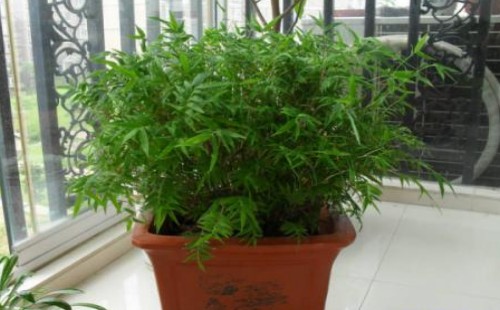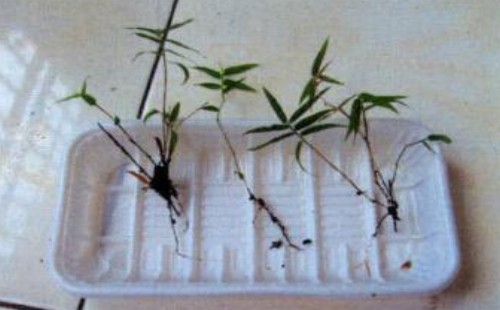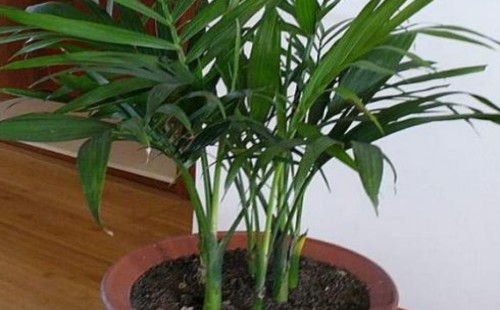Sowing and Propagation methods of Phyllostachys pubescens
In the previous article, the editor mentioned that Phyllostachys pubescens can be bred by sowing. However, the process of adopting the way of seed sowing to breed seedlings is more tedious, and it needs to be germinated in advance, and the climate environment also needs to be suitable, under which young plants can often be cultivated. and then it can be planted as a potted plant. So how to sow the seeds of Phyllostachys pubescens?

Phyllostachys pubescens prefer fertile and loose sandy loam, regardless of air permeability or drainage, can often be satisfied. Therefore, before sowing, we need to sort out the culture soil, and then adjust the acidity of the culture soil according to the characteristics of acid soil, which is usually kept between 4.5 and 7.0, which is more conducive to the germination of Phyllostachys pubescens seeds.
Another important reason for choosing soft sandy loam with good permeability is that seeds need to breathe oxygen during germination, and if the permeability of cultivated soil is too poor, it will naturally affect this normal air conversion. Moreover, when the oxygen content in the soil is too low, the seeds are easy to be transformed into another way of fermentation when the breathing is not smooth, thus producing some ethanol, which not only does not germinate for a long time, but also causes the seeds to rot and deteriorate.
At the same time, the culture soil also needs to maintain appropriate humidity, which is one of the key conditions to improve seed germination. Therefore, when we prepare the culture soil, we should also consider the water retention of the soil. In addition, it is necessary for the soil to have a certain degree of fertility, because the germination of seeds and even the growth of seedlings need nutrients. Before using these cultured soils, sterilization and disinfection are also needed. Only for Phyllostachys pubescens to create a good germination and growth environment, so that sowing success.
While making the culture soil for sowing, the seeds also need to be germinated. Usually, the full-growing seeds are soaked in about 35 ℃ of warm water for 1-2 days, and then germinated. The seeds treated in this way can not only shorten the budding time, but also increase the budding rate and reduce the necrosis of seeds after sowing.
Next, make a drainage layer at the bottom of the flowerpot, then cover it with a layer of culture soil, and finally sow the soaked seeds into the culture soil gently. As a result of germination treatment, sowing can not be too fierce, can not be randomly sown in the culture soil, otherwise it is easy to hurt seeds, but also will cause uneven sowing, resulting in the phenomenon of over-density and thinning after budding. If it is not troublesome, you can use tools such as tweezers to gently place the seeds on the culture soil and pay attention to keeping the buds facing up.
After all the seeds have been sown, we need to cover a layer of culture soil. And the thickness of the covered soil should be moderate, not too deep, not too shallow, otherwise it is not conducive to seed germination. Because if the cover soil is too thick, the seeds will be subjected to too much pressure or resistance during germination; if the cover soil is too shallow, the seeds will not be able to hold on to the soil during germination and affect the absorption capacity. Therefore, the thickness of the covered soil is based on the fact that it has just covered the seed.
After sowing, put the flowerpot in a semi-shaded position where there is no light but the light is bright. During this period, pay attention to timely replenishment of water to maintain soil and air humidity, if all goes well, usually about 40 days to see Phyllostachys pubescens seeds grow seedlings.
Time: 2019-06-07 Click:
- Prev

How to propagate Phyllostachys pubescens-Propagation method of Phyllostachys pubescens
Potted Phyllostachys pubescens has high ornamental value, but how to reproduce it? Like many potted green plants, Phyllostachys pubescens can be bred by sowing, cutting, ramet and other ways. However, Phyllostachys pubescens is generally propagated by vertical cutting, and it is usually not suitable to be buried horizontally.
- Next

How to cut bamboo-bamboo cutting method
In the last article, Xiaobian shared with you the method of breeding seedlings by sowing bamboo seeds. In fact, Phoenix tail bamboo and many potted flower plants, but also through the cutting way to achieve the purpose of breeding young plants. So, how does Phoenix tail bamboo grow? today
Related
- Fuxing push coffee new agricultural production and marketing class: lack of small-scale processing plants
- Jujube rice field leisure farm deep ploughing Yilan for five years to create a space for organic food and play
- Nongyu Farm-A trial of organic papaya for brave women with advanced technology
- Four points for attention in the prevention and control of diseases and insect pests of edible fungi
- How to add nutrient solution to Edible Fungi
- Is there any good way to control edible fungus mites?
- Open Inoculation Technology of Edible Fungi
- Is there any clever way to use fertilizer for edible fungus in winter?
- What agents are used to kill the pathogens of edible fungi in the mushroom shed?
- Rapid drying of Edible Fungi

